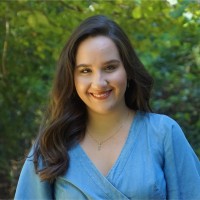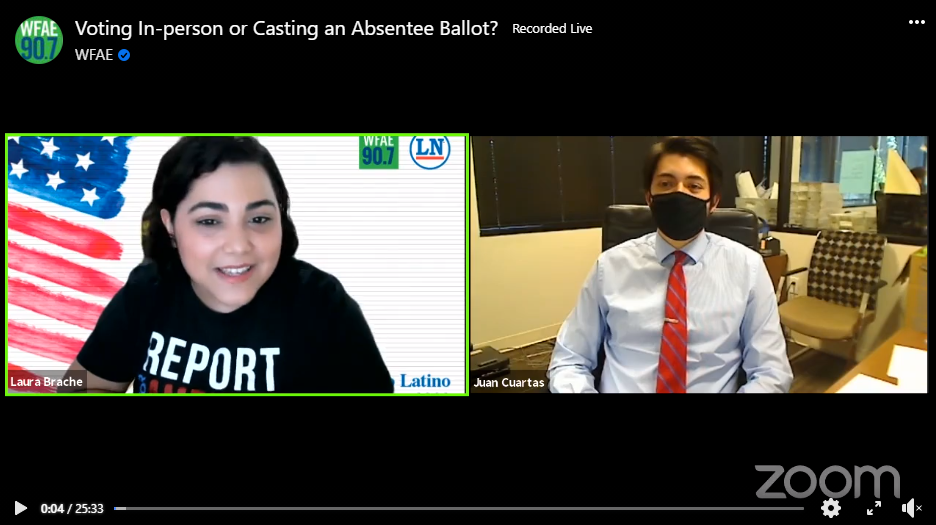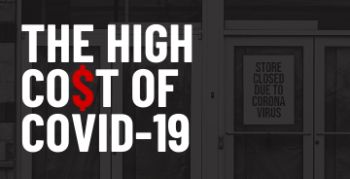How Charlotte newsrooms teamed up to hire a reporter to cover immigration
Ju-Don Marshall, WFAE,This is a series on Better News to a) showcase innovative/experimental ideas that emerge from the Knight-Lenfest Newsroom Initiative and b) share replicable tactics that benefit the news industry as a whole. This “win” comes from Ju-Don Marshall, chief content officer and executive vice president of WFAE, the public radio station in Charlotte. WFAE participated in the UNC Table Stakes program in 2017-18.
Hear Ju-Don and Hilda Gurdian of La Noticia talk more about the partnership on the It’s All Journalism podcast.
During the 2021 Collaborative Journalism Summit, Ju-Don spoke on two panels: one on collaboration in North Carolina (with several Table Stakes alumni!) and one on bilingual collaborations that also featured Hilda.
Question: What communities do you serve and what can you tell us about the history of your organization?
Answer: WFAE, an NPR public radio station, has been serving the Charlotte region in North Carolina for nearly 40 years. WFAE reaches a diverse population spanning 32 counties in North and South Carolina. Our partner La Noticia, a Spanish-language newspaper, has been serving Latino communities across North Carolina for 24 years, with editions in Charlotte; Raleigh, Durham and Chapel Hill; Greensboro, Winston-Salem and High Point; and Asheville and Henderson.
Q: What problem were you trying to solve, and why was solving the problem strategically important for your organization?
A: Public radio, including WFAE, has historically attracted a predominantly white audience. Increasing our coverage of diverse communities is critical to our audience and revenue growth.
In addition, we had several other goals:
- Fulfill our public media mission to make news and information accessible to all members of our community.
- Improve our coverage of the growing Latino community in Charlotte, which at the time was facing increasing detention and deportation activities locally. It’s important to note that, according to U.S. Census data, North Carolina’s Latino population has grown by 25% from 2010 to 2018, more than its growth nationwide. More than 1 in 4 Latinos in North Carolina live in two counties: Wake and Mecklenburg, where Charlotte is located.
- Increase WFAE’s relevance and credibility with our general community.
- Build expertise on issues that matter to the Latino community.
- Improve our staff’s cultural competency when reporting on the Latino community.
Q: How is this approach related to Table Stakes (e.g. one of the 7 Table Stakes and/or an outgrowth of the Knight-Lenfest initiative, etc.)?
A: Our effort is related to Table Stake No. 1 (“Serve targeted audiences with targeted content”) and Table Stake No. 6 (“Partner to expand your capacity and capabilities at lower and more flexible cost”).
Q: How did you go about solving the problem?

Laura Brache
A: We partnered with La Noticia to hire jointly a reporter, through Report for America. In June 2020, reporter Laura Brache joined our teams to cover immigration issues affecting Charlotte’s Latino community. She has two assignment editors, WFAE’s Catherine Welch and La Noticia’s Diego Barahona. The trio meets each week to decide on assignments. The editors decide in that meeting who will take the lead on editing that week. For WFAE, the reporter produces an audio story in English with some voiceover for Spanish speakers and a written piece in English for the website. For La Noticia, the reporter writes the same story in Spanish for the newspaper and website and may produce an audio summary in Spanish.
WFAE and La Noticia are both members of the Charlotte Journalism Collaborative. That said, at the time of our Report for America application, we still didn’t know each other that well. As a result, we spent a lot of time talking through our expectations before we submitted the grant to ensure we were in agreement on the approach and the goals.
Q: What worked?
A: The partnership has been highly successful for WFAE and La Noticia. It’s allowed us each to expand our coverage at a fraction of the cost of doing it alone. We both believe in equitable collaborations, and that’s the foundation on which we built our partnership. (The 2021 Collaborative Journalism Summit features a conversation on May 20 about just and equitable partnerships.) For example, we are deliberate about the way we amplify each other’s publications: We don’t run the Spanish-language versions on WFAE’s sites, and La Noticia doesn’t publish the English-language version. Instead we crosslink all stories, encouraging the audience to read or share the other language version by going to the partner site.
Our editors respect one another’s opinions, consulting each other frequently as they work through edits. The team also meets regularly with other newsroom stakeholders — me, La Noticia’s publisher Hilda Gurdian, La Noticia’s Operations VP Alvaro Gurdian and WFAE’s news director Greg Collard — for overall guidance and goal-setting.
Greg also jumps in to help with day-to-day editing. All members of the group can access our shared story budget, and we share metrics and other insights. We created a shared Slack channel for our organizations. We also work together to produce events (virtual, so far) in English and Spanish about the elections and the COVID-19 impact on the Latino community.
We recognize that this situation is unique, and we have worked hard to ensure that we check in with the reporter about the project, about how she is doing and about how well she is juggling the workload. We have used our Report for America application and contract instead of a memorandum of understanding to guide our collaboration. For example, the contract specifies how we will approach mentoring, editing and training for the reporter. It also establishes an official feedback schedule.
In the beginning, we met frequently, which allowed us to spot challenges and address them quickly. The stakeholders also committed to communicating openly and honestly with each other. We didn’t shy away from difficult or sensitive conversations. A few times, when the assignments started to veer off topic to broader issues, we had to refocus the team on the beat that we all agreed to in the beginning.
At times, we’ve adjusted goals based on the reporter’s guidance. For example, we initially thought Laura might be able to do two to three stories a week, which was supposed to account for producing those stories in English and Spanish. That turned out to be too ambitious.
We’ve all learned from one another. We’ve shared knowledge about the communities we serve, about audience and digital strategy, about newsroom organization and more. We both are stronger as a result of this partnership.
For La Noticia Publisher Hilda Gurdian, the collaboration has allowed her newsroom to produce more in-depth stories that would not have been possible otherwise. She said it also provides more visibility to the issues affecting the Latino community among members of the larger community.
“Many members of this audience had no idea these issues were happening right here in their own backyard, and they appreciate knowing about what their neighbors are going through,” she said.
In addition, Hilda said, “Having this partnership with WFAE has elevated our reputation and our credibility in both the Latino community and in the community at large, where we have the majority of our advertisers.”
Through her reporting, Laura has helped us understand the unique challenges of DACA students, what it’s like to face COVID-19 while being undocumented and uninsured, and the toll of detention and deportation.
According to Laura, one outcome of the collaboration has been that numerous Latino leaders have reached out to set up conversations after hearing her reporting on air. She said many have indicated that they respected NPR’s reporting before but that our local reporting on the Latino community made them view us differently — as an organization that was trying to cover the Latino community in a way that did not cause harm.
Here are some examples of Laura’s reporting:
- NC Man Who Was in ICE Custody Amid Pandemic ‘Wouldn’t Wish This on Anyone’
- Undocumented and Uninsured: NC Family’s Battle with COVID-19 and the Health Care System
- If Texas and Utah Can Pass One, Can NC Pass an In-State Tuition Bill for DACA Students?
- A Day with a Charlotte Immigration Attorney Inside One of the Nation’s Toughest Courts
It’s important that you have a reporter with the right skills for this kind of collaboration. This role required someone who had strong reporting skills but who could also speak and write fluently in English and Spanish. We also wanted someone with broadcast reporting experience. We were fortunate that Laura was in the Report for America candidate pool and had all of those skills. She was a bit of a unicorn in the pool of candidates we received the first year.

Maria Ramirez Uribe
This year, Hilda and I will be adding a new reporter, Maria Ramirez Uribe, to the collaboration. She will replace Laura, who is relocating. One of the things we decided to do differently was to conduct the candidate interviews in English and in Spanish. We didn’t do that last year, but it really helped us determine which candidates would be ready to engage with the Latino community. Also as a result of WFAE’s previous work covering diverse communities, the candidate pool this year attracted several journalists who previously applied to us for similar initiatives or who had done some project work. So we knew we had strong applicants going into the interviews.
Q: What didn’t work?
A: Our initial expectations about how much the reporter could cover in a week were flawed. We quickly learned that it took more time to build trust and find sources that were willing to speak to the reporter. Undocumented residents have a lot of fear: fear of detention, of deportation, of job loss.
Audio stories are complex enough, but the reporter then needed the time to write in English and write the Spanish version of the story. For WFAE’s English-speaking newsroom, we didn’t understand that writing the same story in Spanish wasn’t a simple translation. It takes Laura about a week to put together a more in-depth story. She can turn around breaking news the same day.
We wanted to focus also on community events. COVID-19 disrupted those plans, and even though we did a few virtual events, we weren’t able to have the same momentum we had hoped for.

Reporter Laura Brache talks with Mecklenburg County Board of Election’s Juan Cuartas about the voting process during a Facebook Live event in October 2020.
Q: What happened that you didn’t expect?
A: We went into this partnership expecting to learn a lot. We have. We hoped the community would respond well to our coverage, and they have. Members of the Latino communities, including Latino community leaders, regularly reach out to our reporter with tips and feedback. Our community members have stepped up to provide support for Latino community members we’ve written about.

“The High Cost of Covid-19,” a collaboration among WFAE, La Noticia, Q City Metro and the Charlotte Ledger, examines the financial toll of the pandemic on Black and Latino communities.
The success of the collaboration led us to work with La Noticia to produce a voters guide in English and Spanish. We also started a second collaboration called “The High Cost of COVID-19” with La Noticia, along with Q City Metro, a publication that serves the Black community in Charlotte; and the Charlotte Ledger, a business newsletter. In that collaboration, WFAE hired two reporters to write about the financial toll of COVID-19 on Black and Latino communities for us and our partners.
In addition, La Noticia is now teaming up with another public radio station, WFDD in Winston-Salem, to share a reporter covering Latino issues in another part of the state.
Q: What would you do differently now? What did you learn?
A: I wouldn’t change anything about our reporting and editing approach. It’s been successful. We’ve done impactful work that the community has responded positively to. The things we learned we wouldn’t have without trying some things and adjusting as we went along.
However, I would make sure we had a stronger marketing plan in place to reach the Latino community. We were doing something new, something the community didn’t necessarily expect from us, and we should have thought more about communicating that. I also would have spent more time doing some focus groups around the Latino community’s news and information needs. We planned for that, and it became another casualty of COVID-19. We did try surveys of the Latino community but received few responses.
Q: What advice would you give to others who try to do this?
A: Plan thoroughly before you enter the partnership. Establish your goals. Talk about how you’ll address challenges. Determine your check-in schedule.
One of the benefits of creating this partnership as part of a Report for America proposal is that it forced us to think through the goals, the challenges and the plan for how to overcome them. We spent a lot of time before we identified the reporter establishing how we would co-manage, communicate and check in with each other.
Also, make sure you like and respect the people you want to collaborate with. It would be impossible to do this kind of collaboration if you didn’t. Hilda and I call each other all the time to discuss big and small issues. Most of our calls now have little to do with this collaboration and more about bigger things we are trying to accomplish. We’ve become each other’s braintrust on so many things.
Lastly, don’t reinvent the wheel. Interview newsrooms that have done what you are trying to do. I’m not aware of other newsroom collaborations with a structure like ours, but many collaborations can serve as a blueprint for the way you might approach a similar partnership. Many would be happy to share what they’ve learned.